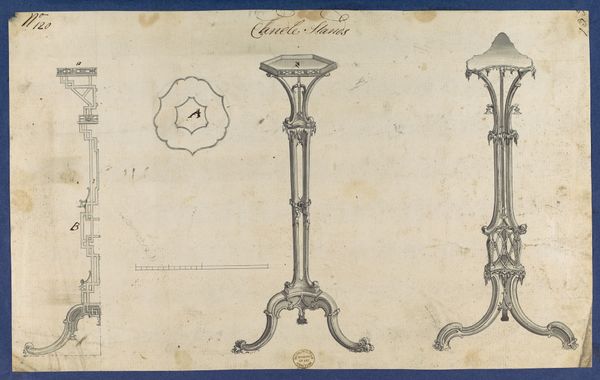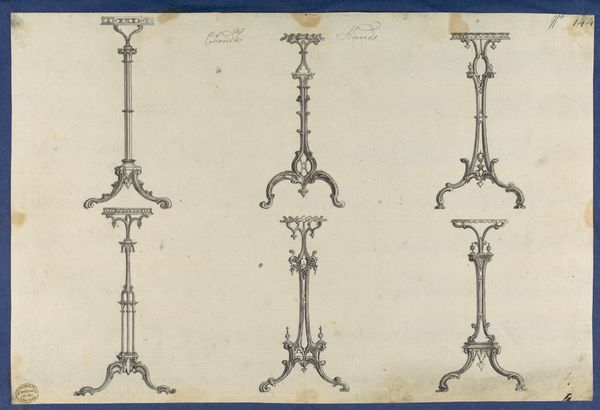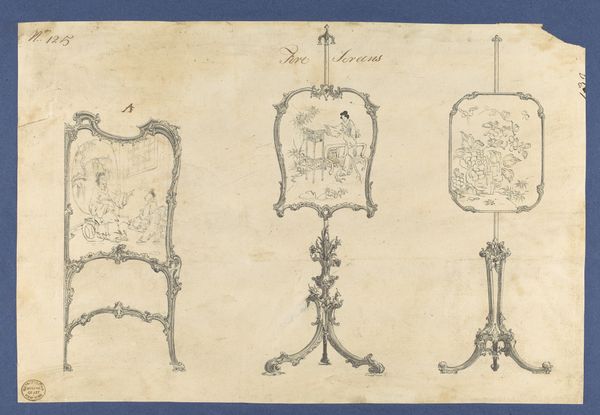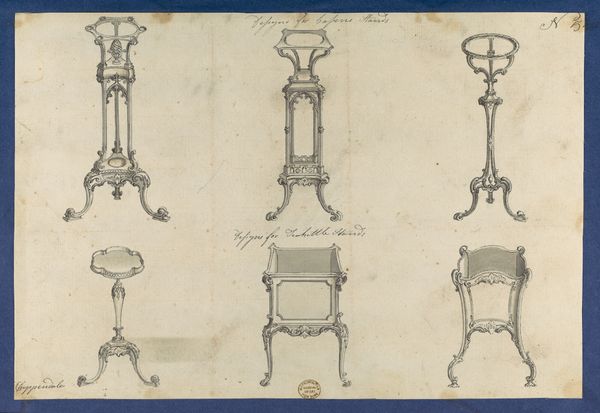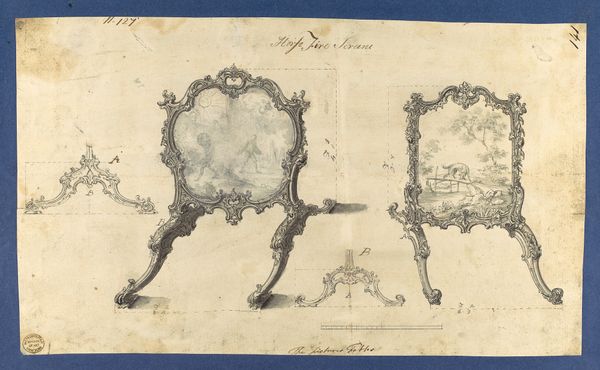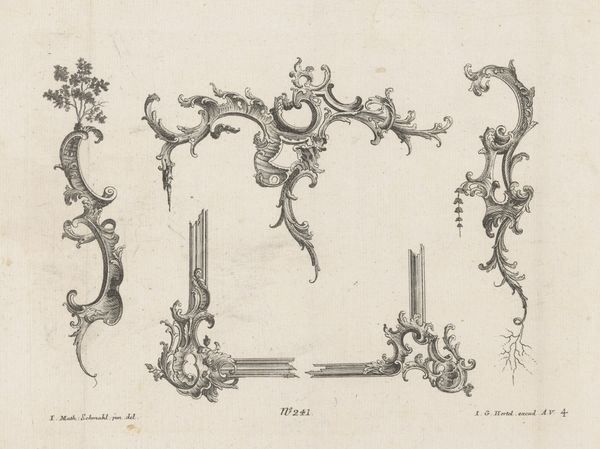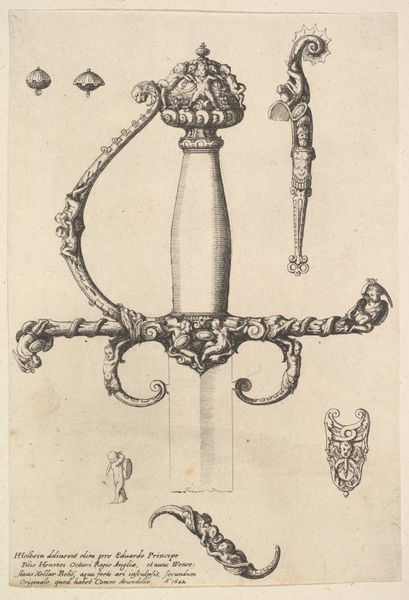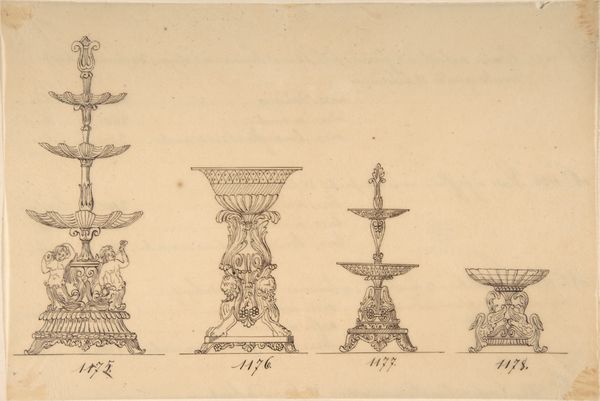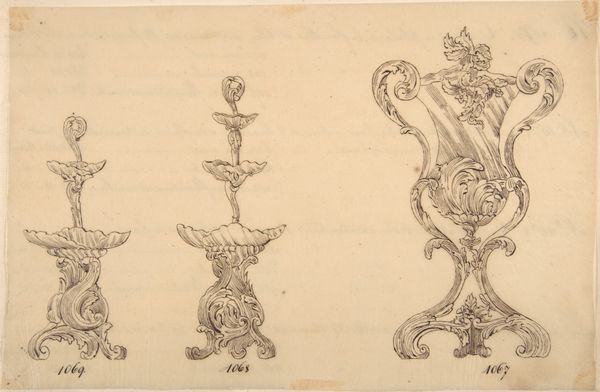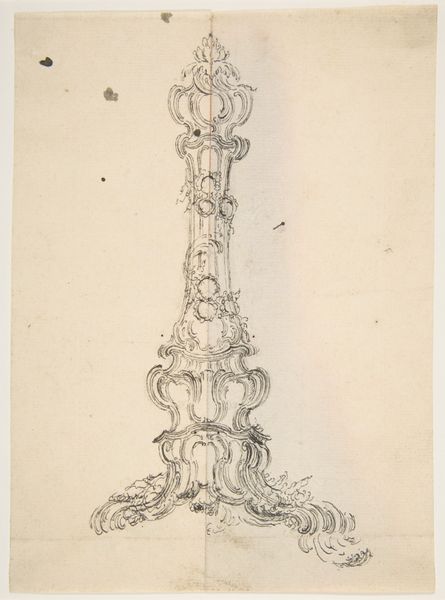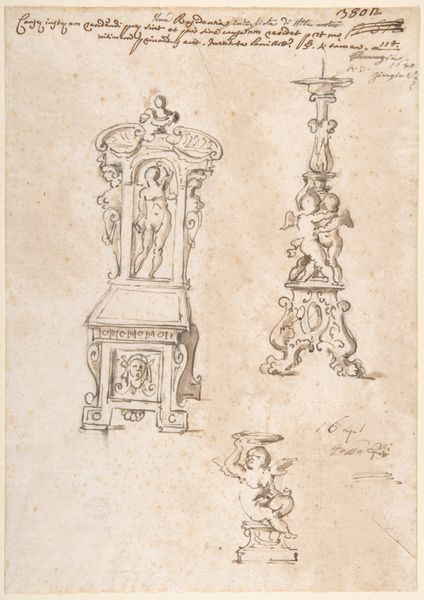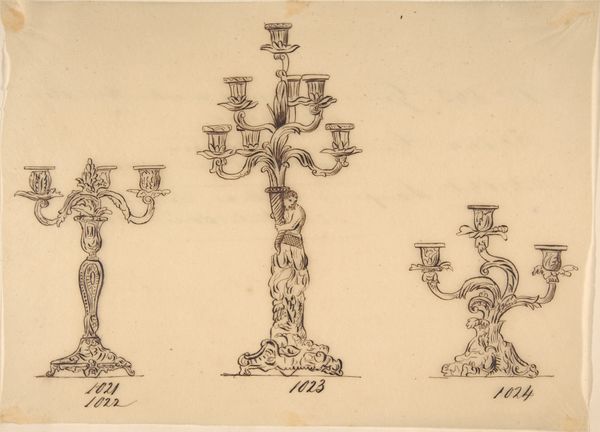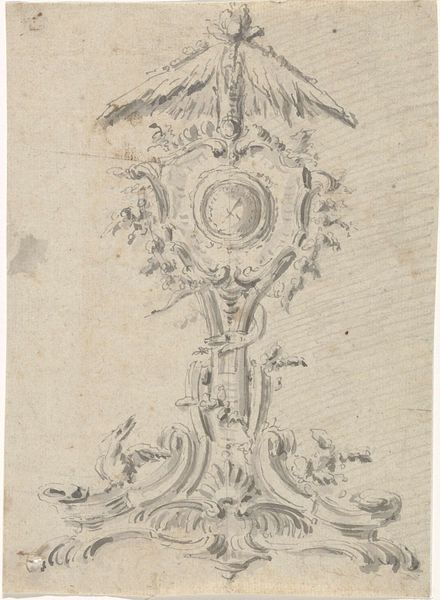
Candle Stands, in Chippendale Drawings, Vol. I 1753
0:00
0:00
drawing, print, paper, pencil
#
drawing
#
neoclacissism
# print
#
paper
#
form
#
coloured pencil
#
pencil
#
line
#
sketchbook drawing
#
decorative-art
Dimensions: sheet: 8 1/4 x 13 1/2 in. (21 x 34.2 cm)
Copyright: Public Domain
Editor: Here we have "Candle Stands, in Chippendale Drawings, Vol. I," a drawing rendered on paper in 1753 by Thomas Chippendale. The elaborate designs feel both delicate and sturdy at the same time. What do you see in the interplay of line and form here? Curator: The draughtsmanship is certainly noteworthy. Consider how Chippendale employs line not merely to delineate form, but also to suggest volume and texture. The cross-hatching, particularly noticeable in the rendering of the supports, imbues the objects with a sense of materiality, doesn't it? The composition is also critical. We see three distinct iterations of candle stands, each exploring different possibilities within a shared design idiom. Editor: So, it's like he’s showing the evolution of an idea through these three variations? Curator: Precisely. The formal variations—notice the shift from organic, almost rococo-esque supports to the more geometric and symmetrical form in the center. Semiotically, the drawing uses line weight and density to articulate a sophisticated interplay between positive and negative space, foreground and background. What impact do the asymmetrical decorative elements have on your interpretation of form and functionality? Editor: They suggest a tension, maybe even a rebellion, against pure functionality. The decorative elements feel performative in their asymmetry. This conversation shed some new light for me about the drawing. It is a dance between utility and pure artistic expression. Curator: Indeed, and examining it in this way is essential. My perspective has shifted as well; the materiality imbued by the linear density has altered how I see these "Candle Stands" now.
Comments
No comments
Be the first to comment and join the conversation on the ultimate creative platform.
